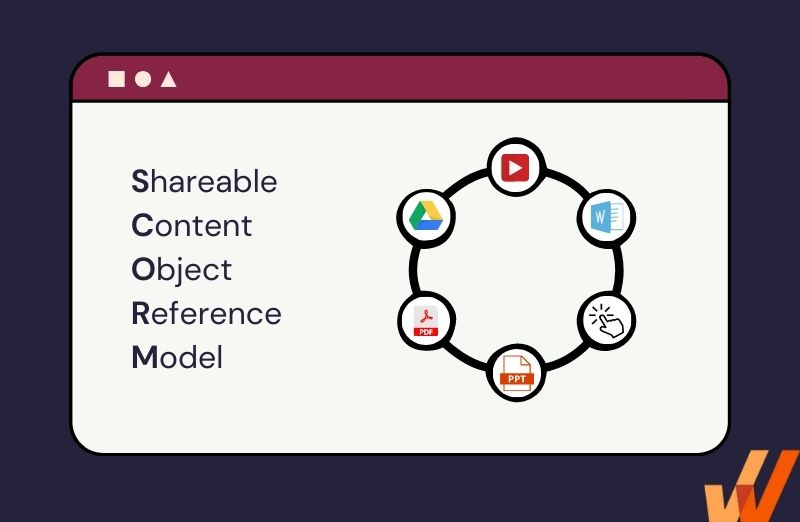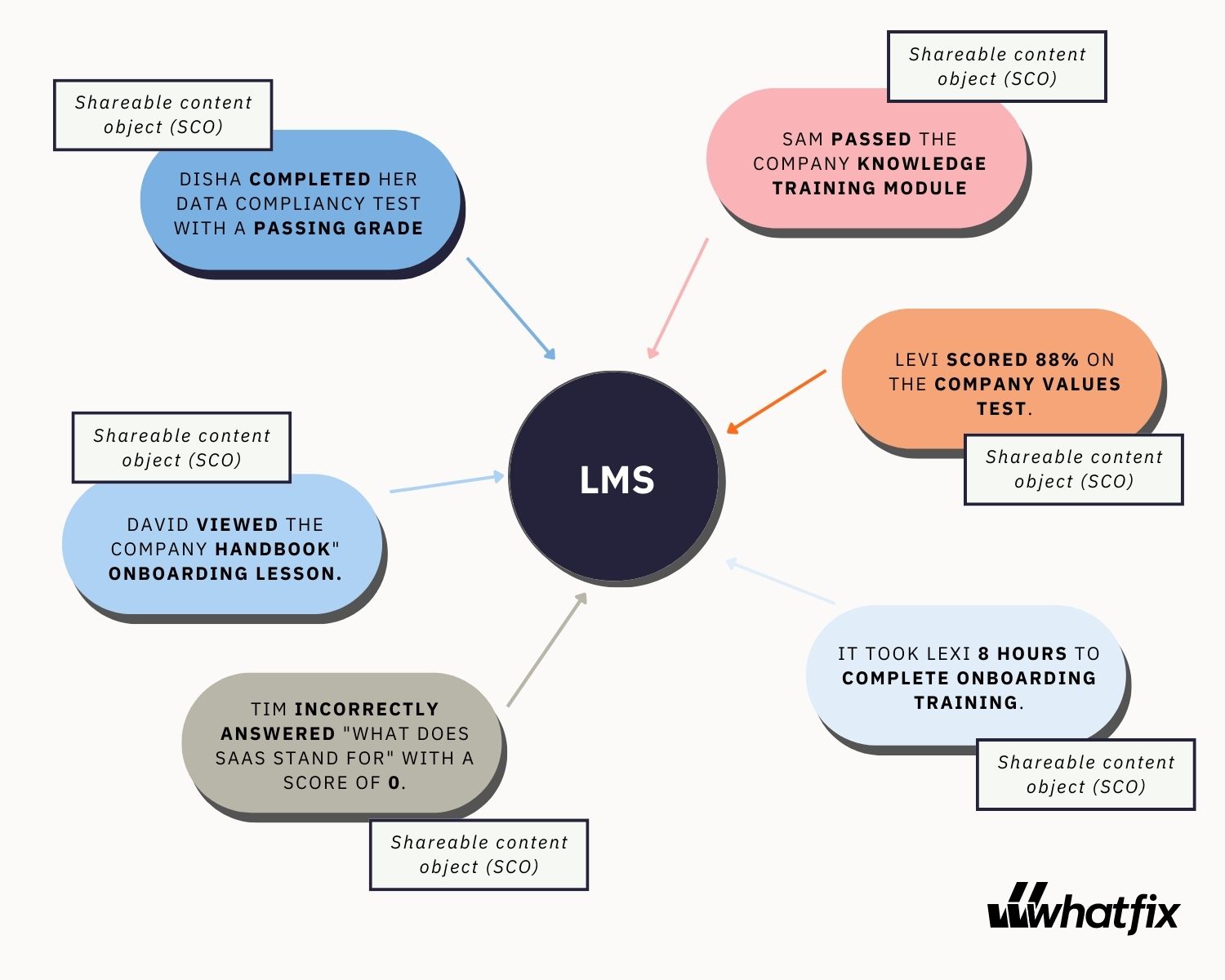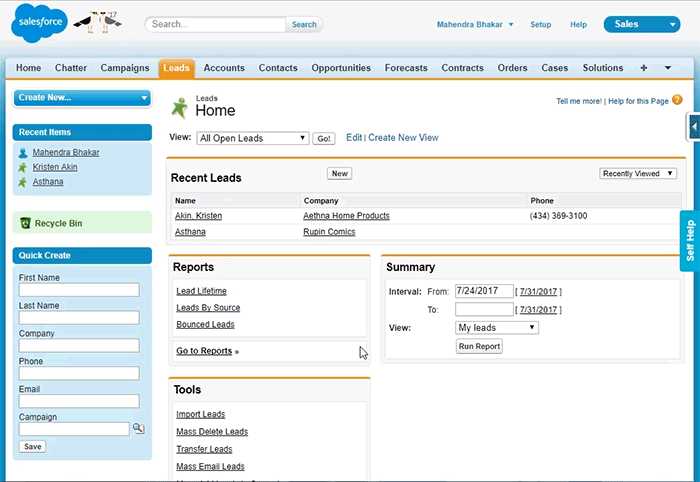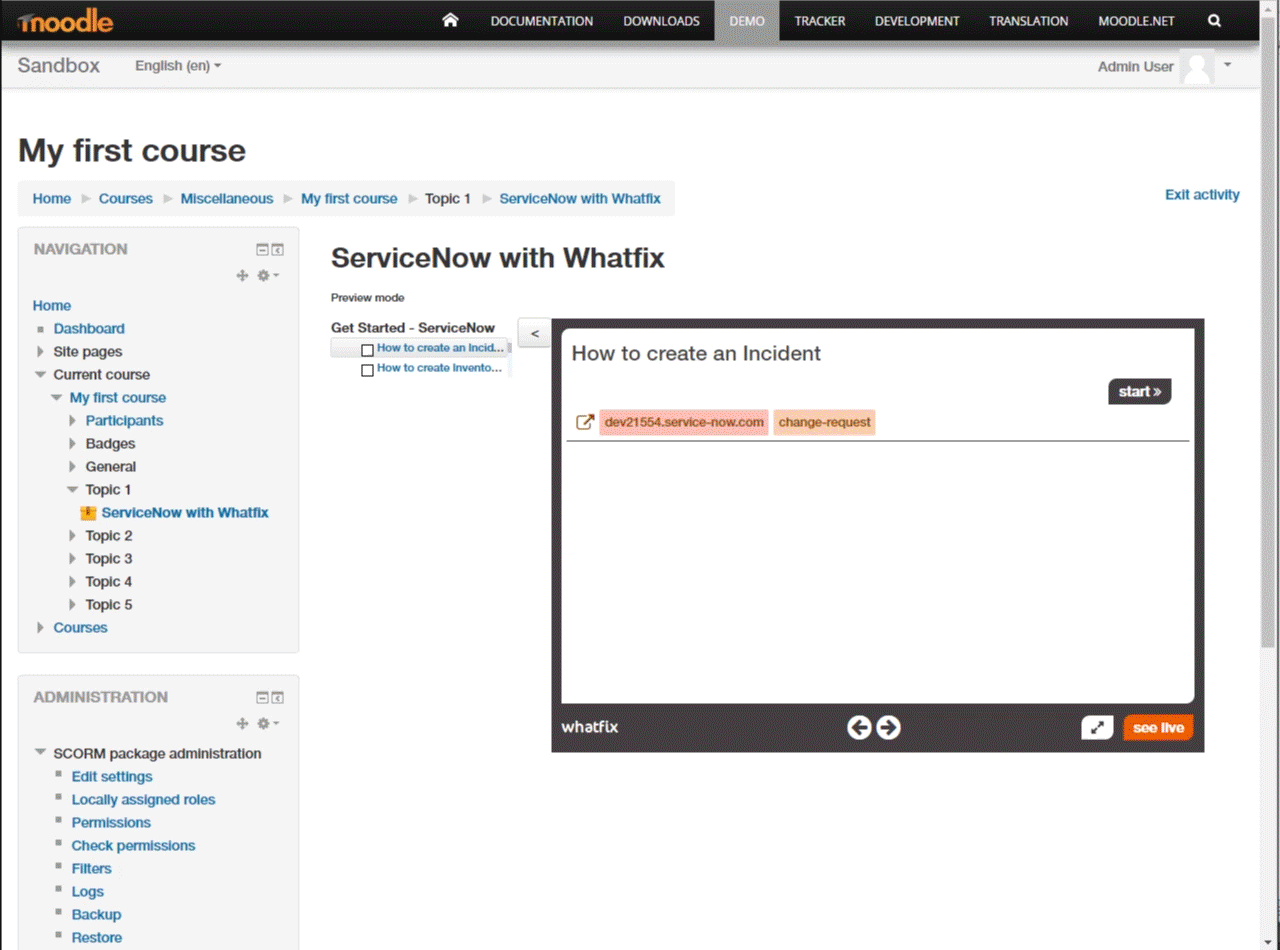What Does It Mean to Be SCORM Compliant? (2024)
- Published:
- Updated: July 2, 2024


LinkedIn’s 2020 Workplace Learning Report found that 45% of learning and development managers spent nearly half of their time curating and building training content as they continued to expand their company’s L&D strategy.
But as you build out your content library, training materials can’t live in silos across your learning management system (LMS), knowledge bases, and desktop storage.
To simplify eLearning for your organization, it’s important to bring content formats together — and that’s where SCORM-compliant content comes into play.
What Is SCORM Compliance?
SCORM (Sharable Content Object Reference Model) compliance means that an eLearning software solution or piece of online learning content is interoperable. This means if your content is SCORM compliant, you can upload it to any LMS system that is also SCORM compliant.
The combination of a SCORM-compliant LMS, a SCORM-compliant employee training software, and SCORM authoring tools, can help you integrate and accelerate training programs.
But not all learning solutions are created equal. Knowing what SCORM compliance is and how to achieve it for your eLearning content is crucial for building out more impactful and productive L&D programs.
To understand SCORM better, we must first break it down into its two parts:
Shareable Content Object (SCO)
An SCO – or Sharable Content Object – is the individual training pieces that make up a larger SCORM training program. You can think of these SCOs as modules, courses, or chapters. Learning and training content that is SCORM-compliant means it can be transferred and shared across various L&D tools and platforms.
Reference Model (RM)
The reference model is the part of SCORM that informs you of the overall modal you must object by, the rules that must be followed, and the standards required for the training module.

What Is Tracked & Managed by SCORM?
What makes SCORM compliancy so important is that it empowers L&D professionals with an integrated learning environment that has the ability to track data across courses, modules, and learning platforms. With SCORM, HR and L&D teams can track:
- Final test courses and quiz results.
- What specific answers individual. employees or students submitted for specific questions.
- The time spent on a learning module or test.
- What learning material was viewed the most.
- Total time spend on a learning course or test.
- Overall learner or training progress.
This enables L&D teams to make data-driven decisions to improve their overall learning programs, as well as provide individual help to those who need it most.

Advantages of SCORM
- Create once and distribute across platforms.
- Plug-and-play with many popular LMS and L&D tools.
- Industry standard, meaning your training content will be accepted across all major platforms.
- Integration of your learning courses across your stack.
- More engaging and relevant learning content.
Disadvantages of SCORM
- Is an older technology created in 2004, and new emerging compliance technology may overtake as industry standard in coming years.
- Doesn’t play well with mobile or tablet devices.
- Videos can be buggy for Apple iOS users, as SCORM was created with the now-outdated Adobe Flash and doesn’t play well with HTML5.
- SCORM authoring tools are expensive and difficult to use.
What Is the History of SCORM?
The Advanced Distributed Learning (ADL) Initiative – a Department of Defense-sponsored research group, created and published the first version of SCORM in 2000. According to the ADL Initiative, “SCORM® is comprised of a collection of interrelated technical specifications and guidelines designed to meet the DoD’s high-level requirements for creating interoperable, plug-n-play, browser-based e-learning content.”
The ADL Initiative established SCORM because they identified a problem – organizations were continually forced to recreate and reprogram eLearning content as new systems and technologies emerged, and IT infrastructure evolved. They created SCORM as the reference model for connecting eLearning content and LMSs without constantly having to reconfigure back-end code.
SCORM Requirements
To be SCORM-compliant, eLearning content and LMSs must adhere to the guidelines the ADL has laid out.
SCORM requires that learning content should be:
- In a ZIP file
- Described in an XML file
- Use Javascript for communication
- Use XLM rules for sequencing
Overall, SCORM has three major sub-specifications: content packaging, run-time, and sequencing.
1. Content Aggregation
The SCORM Content Aggregation Model (CAM) dictates how systems and authoring tools package eLearning content. It standardizes the way SCORM content is transferred via ZIP files and provides instructions for including metadata that makes training material both searchable and discoverable for users.
2. Run-Time Environment
The SCORM Run-Time Environment (RTE) lays out a data model and an API that apply to both sides of the eLearning equation. It standardizes communication between the system (your LMS) and your content objects (the training material you want to upload). The common requirements ensure that SCORM-compliant courses will launch properly in your LMS and that you see accurate engagement data.
3. Sequencing
SCORM’s sequencing requirement gives the content author the ability to create rules on how the learner (or end-user) navigates through and between different SCOS (or content modules.) These sequencing rules are in XML and give course authors and training managers the tools to:
- Track and monitor learning progress.
- Create navigation features for learners
- Give more weight to certain learning modules that are more important
- Automate remediation for unmastered skills

3 Most Relevant Versions of SCORM in 2024
Each new version of SCORM builds upon the one that came before it, making the standards backward-compatible for the most part. The version of SCORM you’ll need largely depends on the features and options you expect to integrate between eLearning content and your LMS.
Understanding the different versions of SCORM that are still relevant today will help you make sure that the content you develop is usable within your LMS. There are three relevant versions to keep in mind:
1. SCORM 1.1
Following the loose framework of SCORM 1.0, the ADL Initiative released SCORM 1.1 in January 2001 as the first implementable specification for eLearning vendors. If you’re dealing with certain legacy systems, SCORM 1.1 might still be relevant to your organization. But this version failed to achieve widespread adoption and covers only the highest level guidelines that exist in later editions of SCORM.
2. SCORM 1.2
Released in October 2001, this version of SCORM is the one that sparked widespread industry adoption. SCORM 1.2 introduced the packaging and metadata concepts that are so important to achieving interoperability for eLearning materials. The major LMSs still support this version, and there’s no sign that it will disappear anytime soon.
3. SCORM 2004
When the ADL Initiative released this version in January 2004, they moved to a more iterative approach to updating the standard. Since 2004, the ADL Initiative has released multiple editions of this version, with the third and fourth editions being the most widely used. Most notably, SCORM 2004 introduced a new category of technical specifications: sequencing and navigation.
Achieving SCORM compliance is often viewed as a technical hurdle, especially for enterprise-level L&D leaders. But this isn’t just an IT issue taking time away from more strategic thinking about how to make programs more effective. There are real business benefits to working with SCORM-compliant eLearning tools.
3 Most Relevant Versions of SCORM in 2024
Corporate training is a $64.4 billion business, and it continues to grow each year. Whether you’re creating more content or adding a tool for designing courses, it’s easy for new investments to create complexity across your LMS, knowledge base, and local storage. This is why SCORM compliance matters.
By conforming with the technical standards, you unlock key benefits that can simplify corporate eLearning infrastructure and increase productivity for your L&D team. The ADL documentation for SCORM 1.2 lists these four benefits of compliance:
1. Accessibility
SCORM provides a framework for designing and building eLearning content with a wide variety of content authoring tools, and to access them all from one central system.
2. Interoperability
Interoperability is a fancy word for integration. This allows for data to be transferred between systems and authoring tools from different vendors without additional coding.
3. SCORM 2004
With SCORM-compliant learning content, you can upgrade systems, processes, and tools without having to worry about reconfiguring or redesigning your eLearning content.
3. SCORM 2004
With SCORM-compliant systems and content, you don’t have to worry about the vendor lock-in challenges that often plague legacy systems. If you choose to migrate systems as your L&D needs evolve, SCORM compliance ensures that you’re able to safely transfer training material to new LMSs without sinking hours into recreating content.
But achieving SCORM compliance isn’t just about saving you time in the event that you migrate to a new LMS. It can also help you transform traditional eLearning content as digital adoption becomes increasingly important to business success. Moving beyond static screenshots and basic tutorial videos by creating real-time interactive guides and other new training materials is key to accelerating digital adoption in your organization. SCORM-compliant authoring tools help you create this kind of content and integrate it seamlessly into your LMS.

Above: Example of Whatfix’s SCORM-compliant in-app guidance.
Even as other technical standards like the xAPI gain popularity in corporate eLearning, SCORM-compliant LMSs and content will remain critical to maximizing efficiency and productivity for L&D programs.
How to Design SCORM-Compliant Learning Material with Whatfix
With the right authoring tools and LMS in place, you can start designing learning material that is SCORM-compliant. One option is to create interactive walkthroughs for application onboarding. Instead of giving employees a simple help article, you can design in-app guidance that walks users through each step of specific application use cases.
There are multiple tools that can help you create these kinds of interactive walkthroughs. But if your authoring tool isn’t SCORM-compliant, you won’t be able to integrate the guide to your LMS for effective delivery and reporting. With Whatfix, the world’s first SCORM-compliant in-app guidance tool, you can easily create interactive courses and upload that content to your LMS in just a few clicks.
1. Design Walkthroughs with Zero Coding
The Whatfix DAP is a zero-coding option for designing step-by-step walk-throughs for the SaaS applications you need users to adopt quickly. Our intuitive interface guides you through the steps necessary to create powerful interactive guides without the help of IT.
To design SCORM-compliant learning material with Whatfix, start by creating a Whatfix Flow—our version of a walk-through that displays as a step-by-step overlay for web applications. In the following GIF, see how the purple pop-ups created with Whatfix guide users through a Salesforce training:

Once you have a piece of training content you’re happy with, you can convert it into a variety of formats. Whatfix can automatically turn a walk-through like this one into a video, a PDF, and a slideshow to use for training across your enterprise.
2. Export eLearning Content as a SCORM Package and Integrate with Your LMS
Our in-app guidance tool conforms to SCORM 1.2, which allows you to export a slideshow of your walk-through for LMS integration. Exporting your training material as a SCORM package just takes a simple click from the Whatfix dashboard
When you choose to export your walk-through as a SCORM package, a couple of things happen on the back end:
- Our authoring tool puts together a SCORM ZIP file that contains all the images, code, text, and other content that make up your training material.
- In addition to separating files so they adhere to SCORM guidelines, we add the XML files that connect to an LMS API and communicate all the technical details about your training material.
Once you have the SCORM package, you’ll be able to upload it directly to your SCORM-compliant LMS. When you integrate a Whatfix walk-through to a SCORM 1.2-compliant LMS like Moodle, the most you’ll need to do is review the training material to ensure that steps appear in the right order.
Once that’s done, your interactive walkthrough will be in your LMS and ready for distribution. This GIF shows how a Whatfix Flow for ServiceNow training would appear within Moodle, how employees would interact with it, and how progress is tracked:

With the right DAP, SCORM-compliant content helps you modernize traditional static training materials. Instead of trying to drive adoption with standard text-based courses, real-time interactive walkthroughs make it easier for users to understand new systems and complete their training programs.
Whatfix LMS integrations will maximize your productivity and help you limit complexity as you introduce new L&D programs and training materials.
If you want to learn how to create SCORM-compliant courses with Whatfix (and how that can benefit your L&D department), request a demo for more information about our digital adoption platform (DAP).
Request a demo to see how Whatfix empowers organizations to improve end-user adoption and provide on-demand customer support
Thank you for subscribing!


